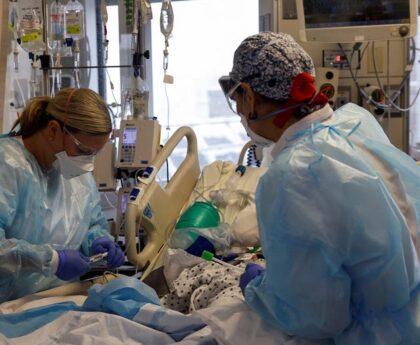The state of Virginia is warning of a statewide outbreak of meningococcal disease, a “rare but serious” bacterial illness that can lead to meningitis.
Since June 2022, there have been 27 cases of the disease reported in eastern, central, and southwest Virginia — three times the expected number of cases in that timeframe, according to an announcement posted by the Virginia Department of Health (VDH) on Wednesday.
A regional outbreak was first announced by the VDH in September 2022 in eastern Virginia, which is where most of the cases have been reported.
E.COLI BACTERIA DETECTED IN GRAND CANYON NATIONAL PARK’S WATER SUPPLY
The last prior update was on March 2022, when the VDH announced that 12 cases of invasive meningococcal disease had been reported since June 2022.
In total, five patients have died from complications associated with meningococcal disease, the agency reported.
In analyzing the DNA of patients, the VDH has determined that the cases are “highly genetically related.”
Most of the affected patients are Black or African-American adults between the ages of 30 and 60.
Meningococcal disease is caused by the bacterium Neisseria meningitidis.
About 10% of people have this bacteria but do not become ill, according to the Centers for Disease Control and Prevention (CDC). For some, the bacteria can cause illness.
FLORIDA MENINGOCOCCAL OUTBREAK AMONG GAY AND BISEXUAL MEN IS ONE OF WORST IN US HISTORY: CDC
Meningococcal disease can be spread through respiratory and throat secretions, often by coughing, kissing or sharing cups or utensils. It is not as contagious as the cold or flu, the CDC noted.
When the disease leads to meningitis, the bacteria causes swelling of the brain and spinal cord.
Typical symptoms include fever, headache and stiff neck. Some may also experience nausea, vomiting, light sensitivity and mental disorientation, the CDC stated.
The bacteria can also cause a dangerous bloodstream infection called meningococcal septicemia, which can lead to bleeding into the skin and organs, per the CDC website.
Symptoms of this infection can include fever, chills, fatigue, vomiting, severe muscle aches, diarrhea, rapid breathing and a dark purple rash.
MYSTERIOUS ILLNESS TRIGGERED BY TICK BITE COULD AFFECT THOUSANDS, YET MANY DOCTORS ARE UNAWARE OF IT
Diagnosis is made via a lumbar puncture, also known as a spinal tap, in which samples of cerebrospinal fluid are tested for the bacteria.
Patients require immediate antibiotic treatment; severe cases may also require blood pressure medications, breathing support, wound care for damaged skin or surgical removal of dead tissue, the CDC noted.
Between 10% and 15% of patients will die from the disease.
One in five will suffer long-term disabilities such as brain damage, hearing loss, limb amputations or nervous system problems.
The VDH recommends following these protocols to prevent the spread of meningococcal disease:
–Avoid sharing personal items, such as lipsticks, toothbrushes and vapes
–Practice good hand hygiene
–Maintain distance from people who are sick
–Seek immediate medical attention upon noticing symptoms
CLICK HERE TO SIGN UP FOR OUR HEALTH NEWSLETTER
There are vaccines available for meningococcal disease.
The CDC recommends that all preteens and teens between 11 and 12 years old should receive the MenACWY vaccination, followed by a booster dose at 16 years old.
Children and adults in high-risk groups should receive the MenACWY vaccine, the CDC states on its website.
Teens and young adults (16 through 23 years old) may also get a MenB vaccine.
Article Source: Health From Fox News Read More




